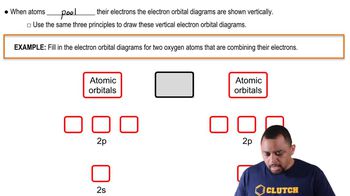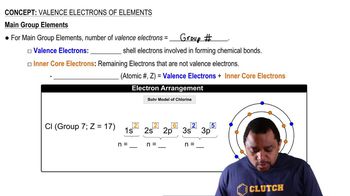Textbook Question
For each of these contour representations of molecular orbitals, identify (a) the atomic orbitals (s or p) used to construct the MO (i)
 Verified step by step guidance
Verified step by step guidance



For each of these contour representations of molecular orbitals, identify (a) the atomic orbitals (s or p) used to construct the MO (i)
For each of these contour representations of molecular orbitals, identify (a) the atomic orbitals (s or p) used to construct the MO (iii)
For each of these contour representations of molecular orbitals, identify (b) the type of MO (s or p) (iii)
For each of these contour representations of molecular orbitals, identify (c) whether the MO is bonding or antibonding (i)
(a) An AB2 molecule is linear. How many nonbonding electron pairs are around the A atom from this information?
(b) How many nonbonding electrons surround the Xe in XeF2?